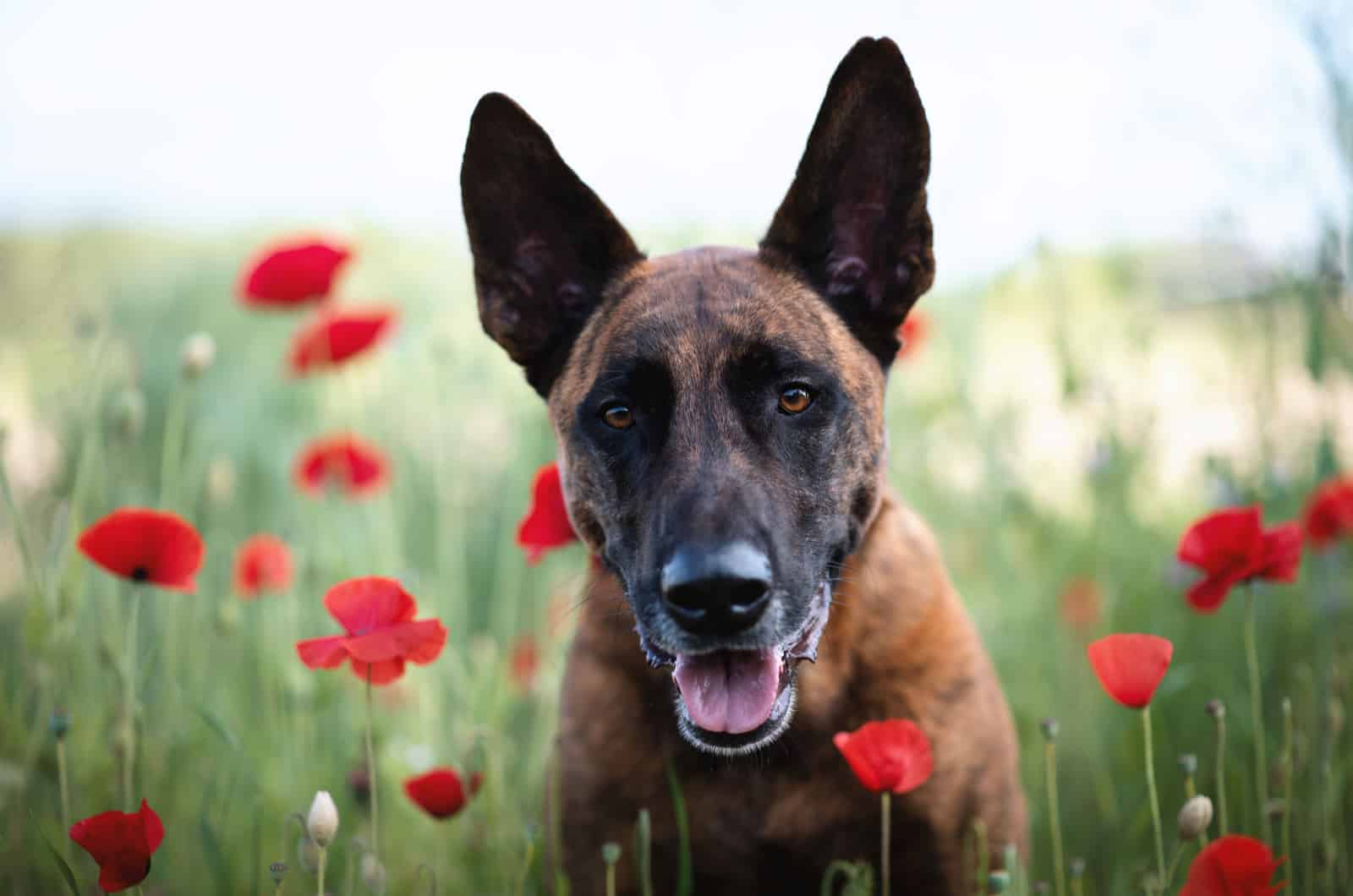They’re both brilliant working dogs and are easily mistaken for each other, but which one is right for you? Are they really that different?
That’s what we’re here to find out!
Let’s jump right in and examine the differences and similarities to help you choose, starting with a quick overview of each breed.
The Belgian Malinois
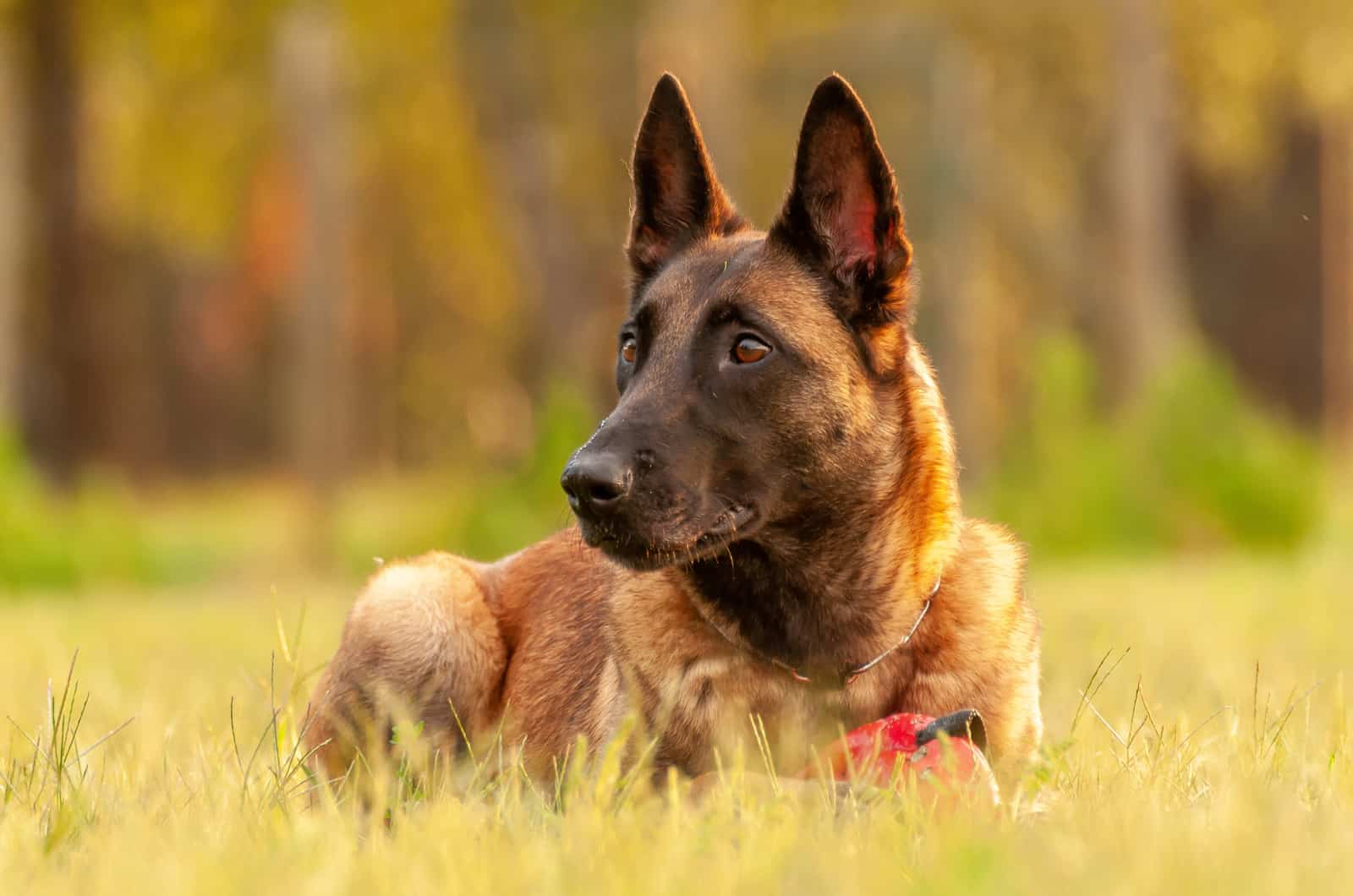
The Belgian Malinois, otherwise known as the Mal, is a high-energy herding dog, one of the four traditional herding breeds from Belgium, which includes the Laekenois, Tervuren, and Groenendael (also called the Belgian Shepherd). It takes its name from the town of Malines, from where it originates.
In some parts of the world, these four herding breeds are regarded as one: the Belgian Sheepdog.
However, in the US, the Belgian Malinois was recognized as a separate breed in 1959 by the American Kennel Club (AKC). Around this time, the breed had suffered as a result of WWII when the supply of European breeding stock came to an end. Without the hard work of breed enthusiasts, they would have died out in the US.
In terms of its shape and size, it resembles a small German Shepherd (GSD) though its short coat and color usually make it easier to tell them apart.
Like the GSD, it has found favor as a police dog because of its quick intelligence and trainability. Mals are also trained as protection dogs. The Belgian Malinois is an exceptional big guard dog.
According to the AKC breed standard, these are the Mal’s coat colors:
Standard
• Red
• Mahogany
• Fawn
• Fawn sable
• Red sable
Non-standard
• Brindle
• Black
• Cream
• Liver
• Gray sable
• Gray
• Cream sable
They may also have a black mask (muzzle).
This coat is always smooth and short.
One thing to note is that if you choose a Belgian Malinois as a family pet, you should make sure that it is not from a working line. These dogs are trained purely as working dogs and don’t make good pets.
The Dutch Shepherd
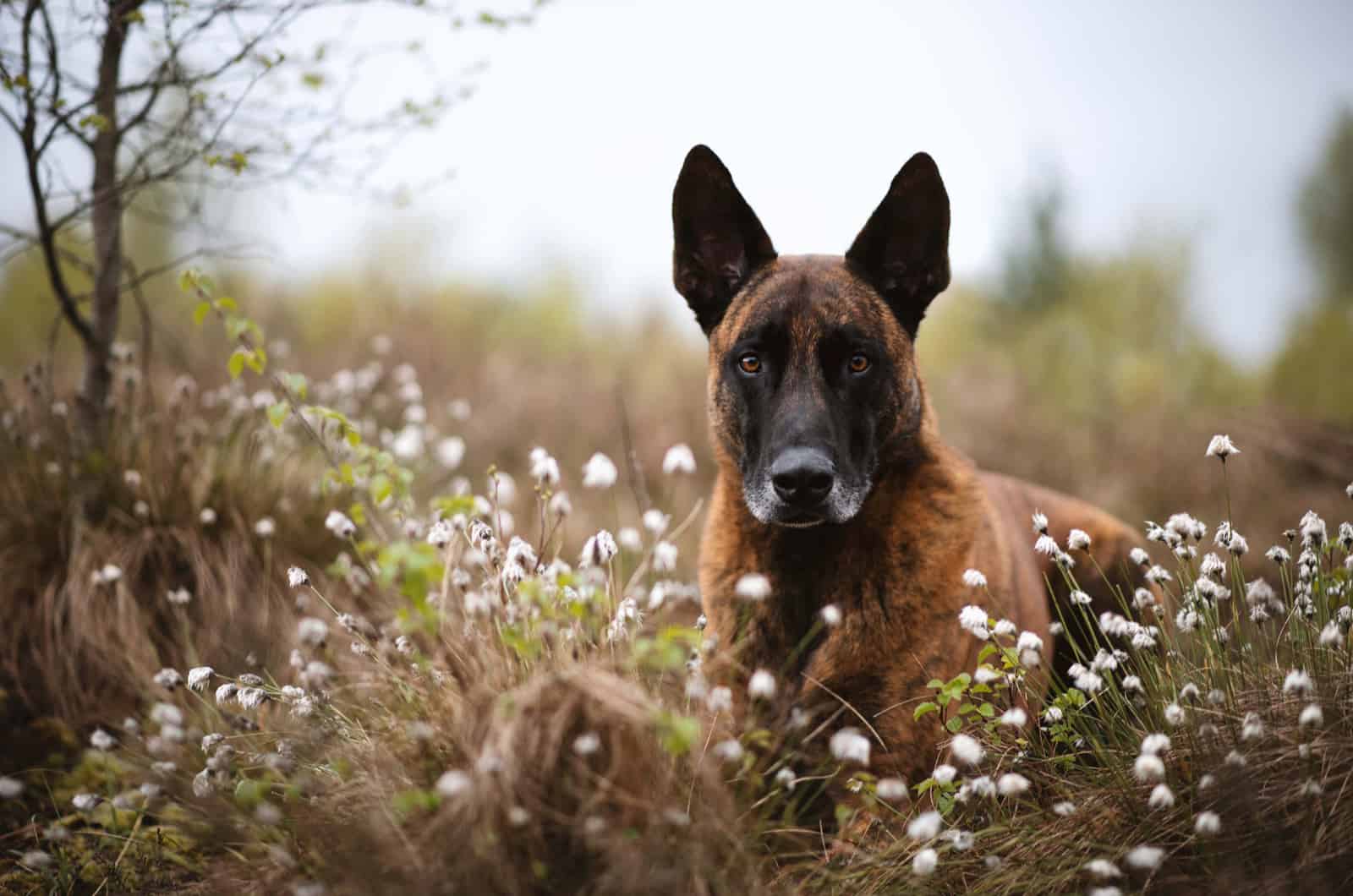
This is another herding dog that’s a GSD lookalike! Once again, they are smaller than their German cousins, though they are almost always brindle.
One thing to note is that this is still a very rare breed. As farming methods in the Netherlands were modernized, there was less need for herding dogs, and so the Dutch Shepherd nearly became extinct. The reason it stuck around was that it is so versatile, finding roles in other industries.
Although rarely seen outside of the Netherlands, it is fast becoming a favorite choice for search and rescue teams and is often selected to be trained as K-9 unit police dogs.
Dutch Shepherds come in three coat types: long-haired, short-haired, and rough-haired, all with a wooly undercoat. Unlike the Mal, they only have two standard coat colors: gold or silver brindle. They also come in one non-standard color, which is yellow.
Are Dutch Shepherds And Belgian Malinois Related?
With their German Shepherd looks, you might have already guessed that they share a common ancestry. All three are distantly related, stemming from continental herding dogs around the same time. Curiously enough, they were all created sometime in the late nineteenth century using wolf-like sheepdogs that had been around for many years.
Even so, each breed has developed separately over the decades, taking on different characteristics and qualities through selective breeding.
The Dutch Shepherd has probably changed the least out of the three, as the breeding standard was so strict that they almost became extinct. Their brindle color was set as the breed standard in 1914 to distinguish them from the GSD.
So, yes, Dutch Shepherds and Belgian Malinois are related but separated by at least 120 years of breeding.
Belgian Malinois Vs. Dutch Shepherd: Weight
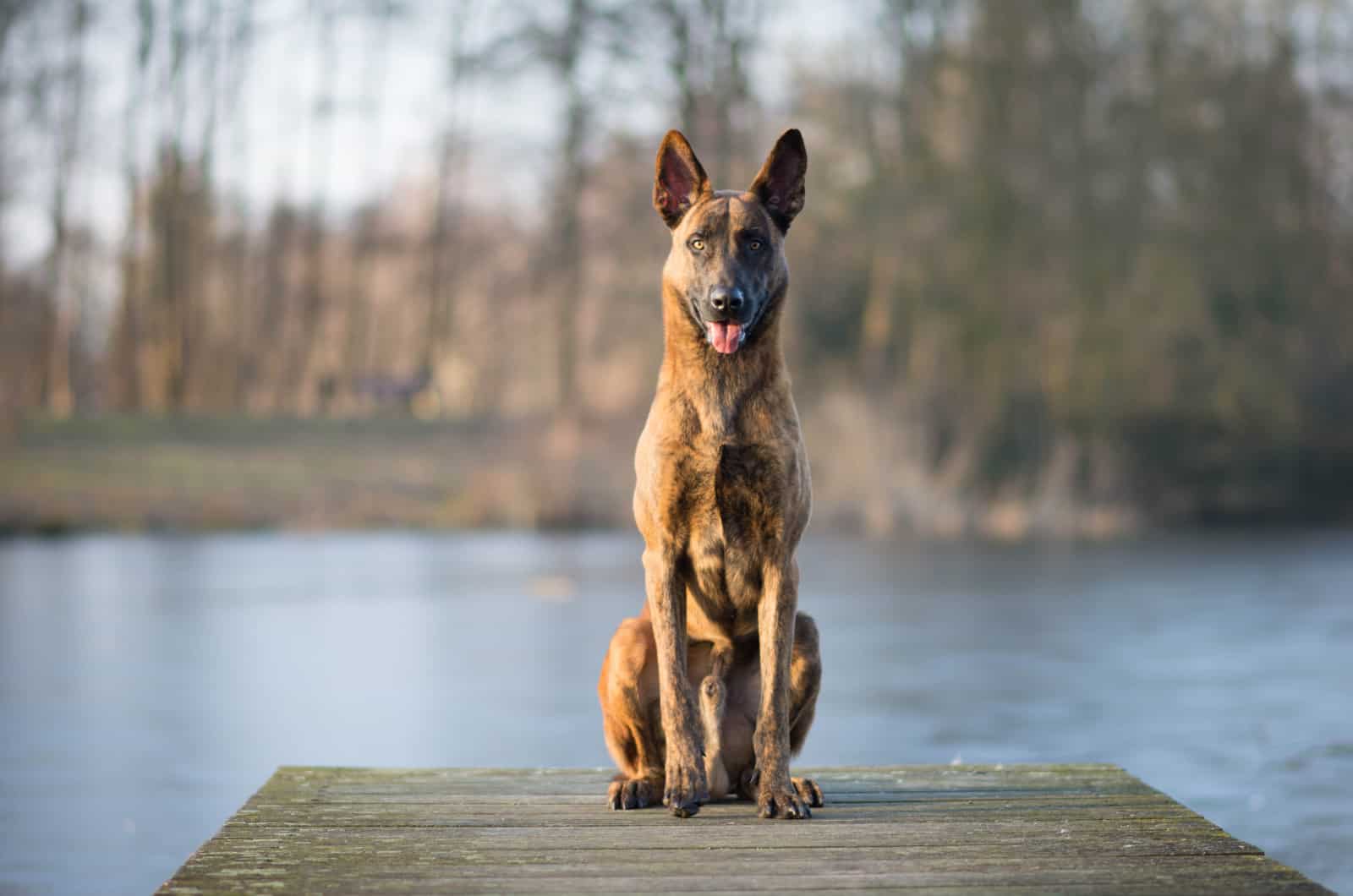
As always, determining the weight of a dog breed is open to interpretation. Depending on where you look, you’ll find different figures for the average weight of each breed.
The best way forward is to use figures given by breed clubs and kennel clubs, as these organizations set the breed standards, and are therefore, likely to be more accurate than those on an independent website.
To avoid confusion, we’ve taken the figures given by the AKC, the Dutch Shepherd Dog Club of America, and the American Belgian Malinois Club (ABMC)
According to these organizations, Belgian Malinois males weigh in at between 60 to 80 pounds, while females are between 40 to 60 pounds. The Dutch Shepherd, whether male or female, averages between 42 and 75 pounds.
As you can see, there’s not really much difference as they all fall somewhere within 40 to 80 pounds, with females falling into the lower bracket. Even though the Dutch Shepherd figure doesn’t differentiate between males and females, it is more likely that males will be heavier.
So, in the Belgian Malinois Vs. Dutch Shepherd contest, there’s not a lot to go on. Both are medium to large breeds, and the final adult weight of any dog will depend on the parents, the sex of the dog, and the level of nutrition it receives as a puppy.
Belgian Malinois Vs. Dutch Shepherd: Size
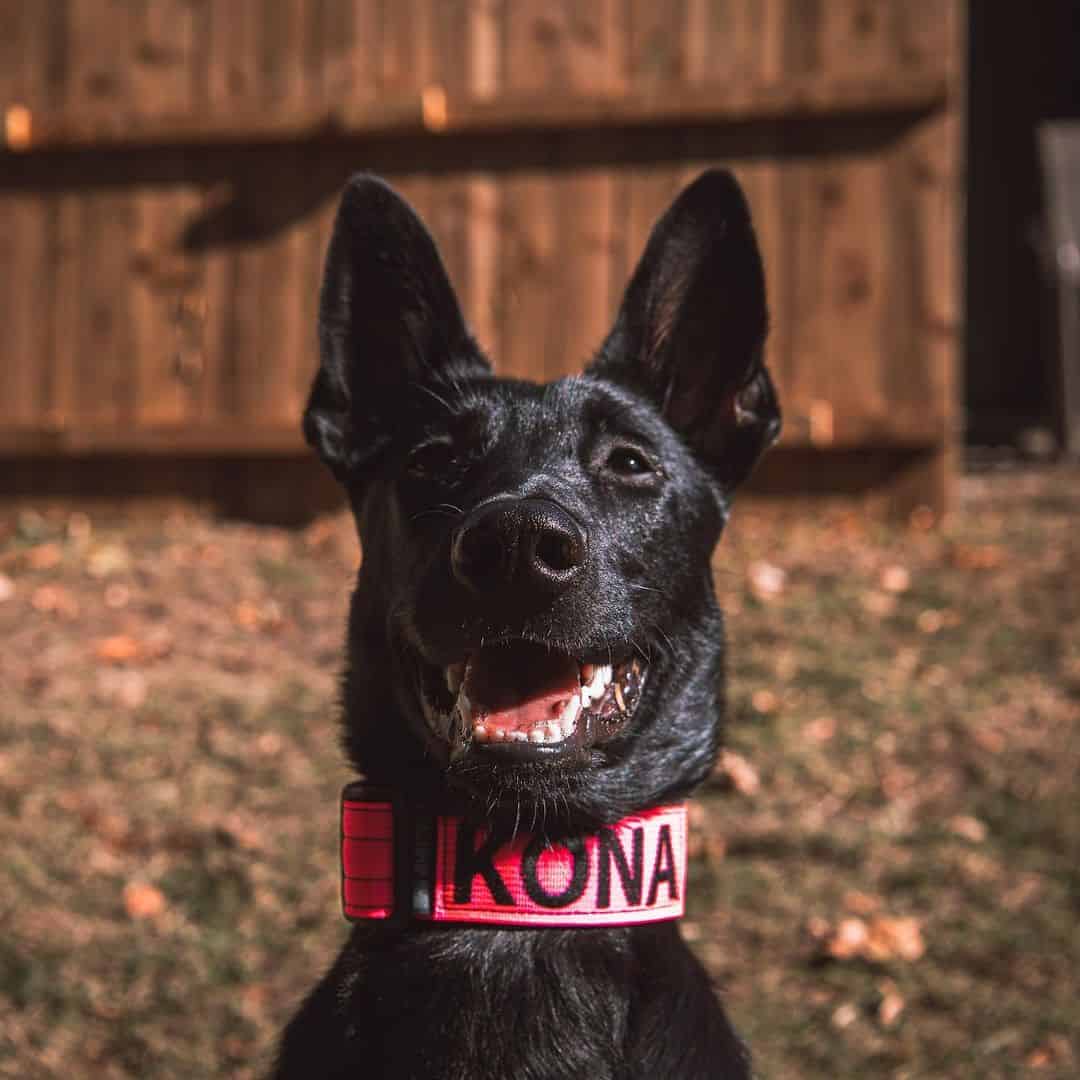
Photo from: @kona.malinois
Taking our figures from the same sources, we can see that there is little more difference in their height. Belgian Malinois females stand between 22 and 24 inches at the shoulder, while males are between 24 and 26 inches. Dutch Shepherds are slightly smaller, measuring between 21.5 and 24.5 inches.
Again, it’s not a massive difference, although the smallest Dutch Shepherd can be shorter than the tallest Mal by about 5 inches.
In the Belgian Malinois Vs. Dutch Shepherd stakes, we still can’t declare a winner. Just as with their weight, your dog’s height when they are fully developed will depend on its genes as well as the quality of nutrition it gets as a puppy.
However, you are more likely to get a taller, heavier dog if you opt for the Mal, especially if you choose a male. Conversely, if you wanted a smaller dog, you could go for a female Dutch Shepherd.
Belgian Malinois Vs. Dutch Shepherd: Grooming
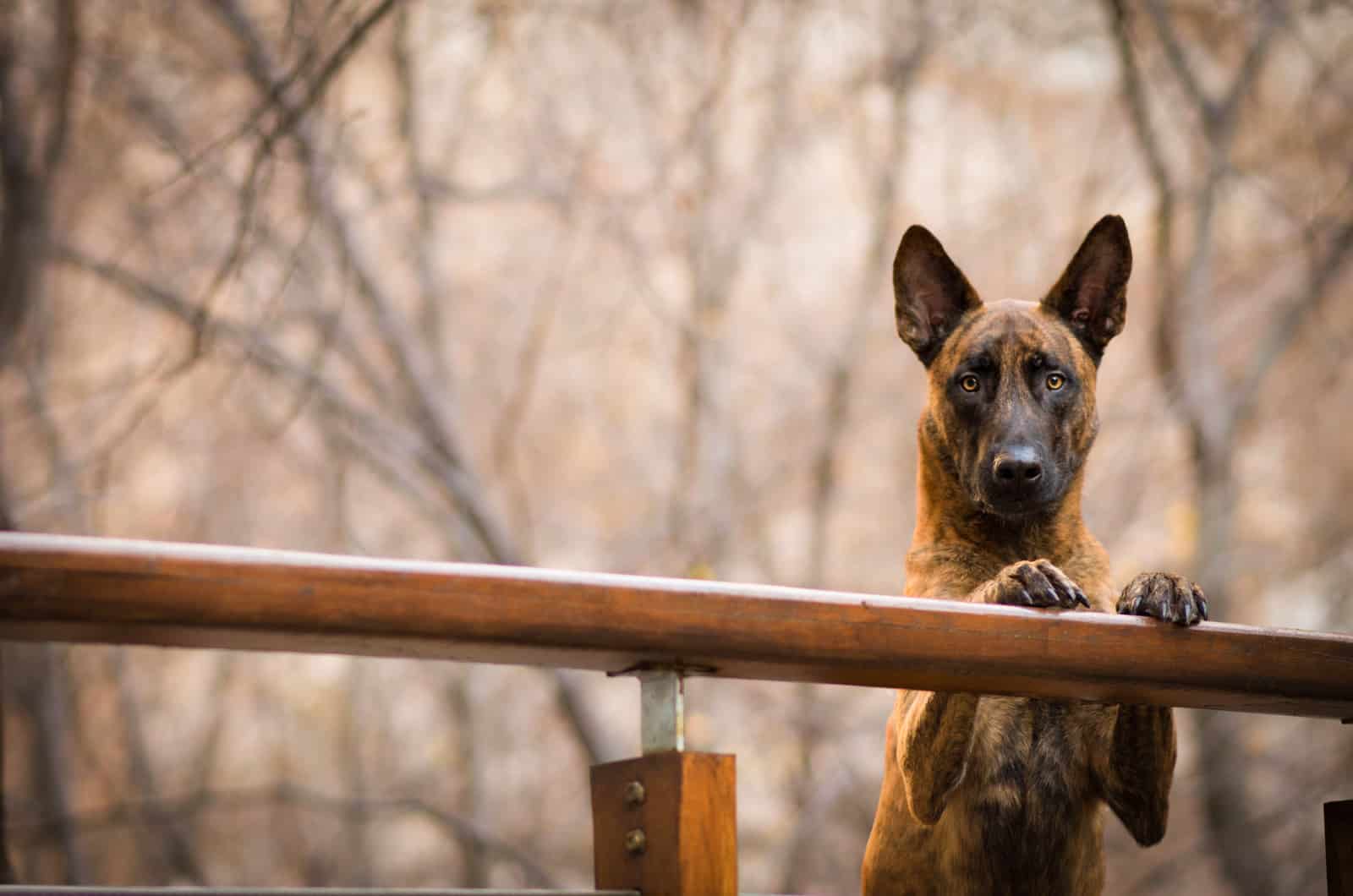
The Mal’s coat is short, waterproof, and easy to take care of. All it needs is an occasional brush with a grooming mitt, hound glove, or medium-bristle brush. Like most other dogs, they will shed twice a year, and they are moderate shedders the rest of the time. Daily brushing during the shedding season will keep the hair under control.
The Dutch Shepherd has a double coat that might need more work, but really it depends on which coat type your dog has:
Short hair – occasional brushing is fine, though you’ll need to brush them daily during the shedding seasons in spring and fall.
Long hair – once a week, depending on the environment or any work they are involved in.
Rough hair – once a month, but the rough coat needs to be hand-stripped every six months.
Both dogs should be bathed only occasionally or when needed.
When it comes to grooming in our Belgian Malinois Vs. Dutch Shepherd battle, the Mal pulls ahead slightly as it is easier to groom.
Belgian Malinois Vs. Dutch Shepherd: Temperament
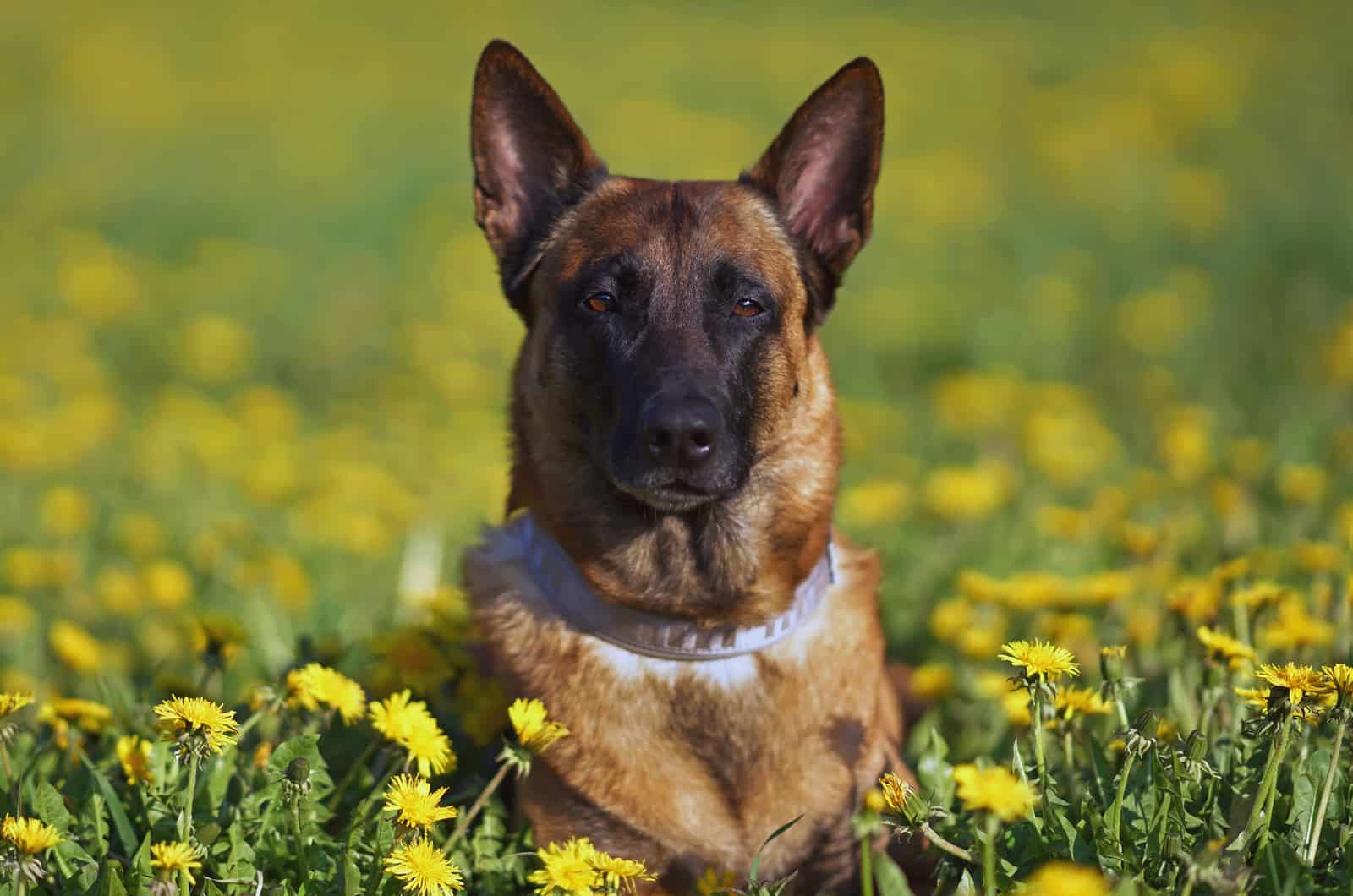
Out of the two, the Dutch Shepherd wins when it comes to showing affection to its family. While they may be reserved and aloof with strangers, they are very loyal and affectionate toward family members, and they have a really playful side. Once they get to know people, they are happy to let them into ‘the pack.’
They are great with kids, particularly when raised with them from a pup. The dog must regard the kids as being higher in the pack, or they may try to boss them around. Socialization goes a long way to smoothing any problems, but you need to keep an eye out for that deeply-ingrained herding instinct. They may have a tendency to herd children and nip at them!
Although it has its couch-potato moments and will happily claim your sofa for itself, this is a dog that has to be active at some point every day. They’re in their element when given a job to do, which is why agility courses, flyball, obedience training, etc., are all great ideas. Long walks are a must, and you’ll need to invest many hours in playtime.
The Dutch Shepherd makes an excellent jogging or hiking partner, and you’ll run out of steam long before they do.
These dogs are seriously smart (almost as smart as a Border Collie!) and always eager to please, so training shouldn’t cause you many problems. However, you need to make sure that they have adequate mental stimulation; otherwise, you’ll have a very frustrated dog on your hands. This is likely to lead to destructive behavior, and in some cases, aggression.
They make great guard dogs as they are always alert and ready to protect their family and home.
In the past, the Dutch Shepherd was sent out to escort sheep to the pastures in the morning, then round them up in the evening. This strong work ethic is still present, and they thrive on being kept busy.
What about the Mal?
You could almost say, all of the above! They mirror the Dutch Shepherd in many ways, but with a few differences.
For example, they aren’t quite as affectionate or playful, and they have a much higher prey drive. This means that they’ll be more likely to chase after small animals, including family pets, so you’ll need to work hard on training and socialization to curb this behavior.
They also need a lot of exercise, just like the Dutch Shepherd, but they are more likely to misbehave when they are bored. The Dutch Shepherd is slightly more independent and will do better when left alone.
They are great family pets but would be best suited to a home that has previous experience with dogs.
One word of warning: if you seriously want one of these dogs, you should only ever approach a reputable breeder to ensure that they are purebred. If you buy online, from a backyard breeder, puppy mill, or pet store, there is no guarantee that it is a purebred dog. Unethical breeders sometimes cross different breeds when they can’t find two of the same or in an attempt to create a particular look. You will also have no idea about the parent dogs’ health and temperament.
Learn More: Are Belgian Malinois Good With Kids Or Not? Aggression In Dogs
Belgian Malinois And Dutch Shepherd Rescue
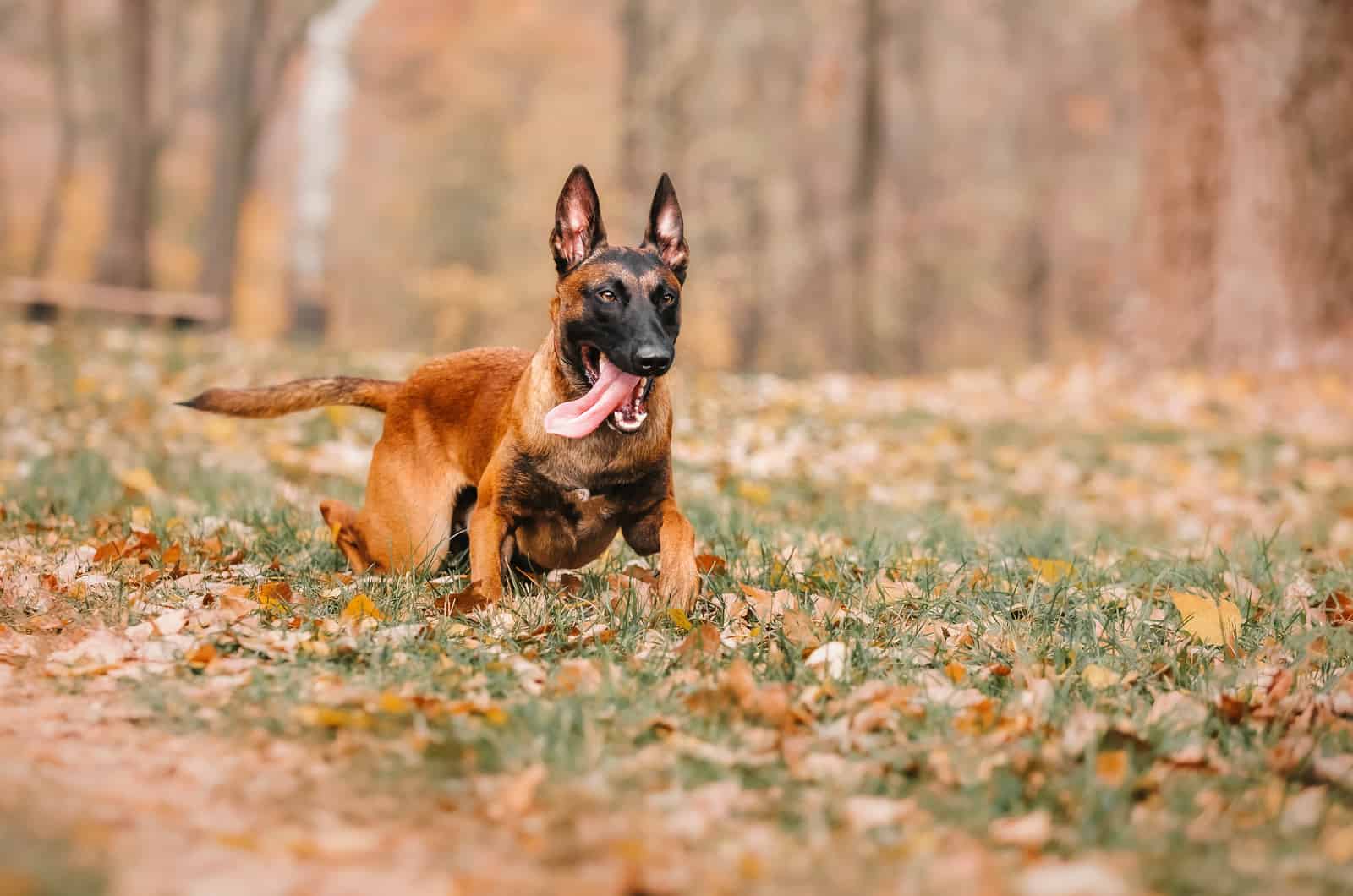
Whichever of these wonderful breeds you prefer, you might want to consider getting a rescue dog rather than a puppy from a breeder.
Why should you do this? You’ll save yourself a bunch of money. Purebred Dutch Shepherd or Belgian Malinois puppies from a respected, reputable breeder will cost between $1,000 and $2,500 on average, although prices can go much higher if you buy a pre-trained dog.
You’ll also be providing a home for a dog that’s been surrendered, abandoned, neglected, or abused. Through no fault of their own, dogs find themselves in pounds, shelters, and rescue centers where many face an uncertain future. It is estimated that around one million dogs are euthanized in the US every year, mostly because shelters and animal control centers don’t have the space or the resources to keep them indefinitely.
There are rescue groups specifically dedicated to helping the Mal and the Dutch Shepherd, such as MAD Rescue, based in Michigan. These volunteers work together with other organizations and professionals to rehome as many Mals and Dutch Shepherds as they can.
Admittedly, this may present more of a challenge, as it is easier to take in and train a puppy than an adult dog, but for those special people who are willing to accept a rescue dog into their home and heart, the rewards are worth the effort.
You still might find a puppy – or at least a young adult dog – but most rescues are dogs of one year or older that have lost their homes and families. Some will have been through hard times, having suffered broken bones in accidents or deliberate injury. Others may be traumatized because of abusive owners or having lived rough for a while. All of them need lots of love and care, and they deserve a home just as much as a shiny new pup from a breeder.
Still, it takes a good deal of strength and determination to take on a rescue. It takes a special kind of person or family.
If that sounds like you, then check out places like MAD Rescue to see if they have the right dog for you.
Belgian Malinois Vs. Dutch Shepherd: Health Issues
https://www.youtube.com/watch?v=U6fC7crHbcQ
Thankfully, both are pretty healthy breeds without many major health problems affecting them. Even so, reputable breeders screen for particular issues.
Both breeds will be subjected to an OFA (Orthopedic Foundation for Animals) assessment to test for hip dysplasia and elbow dysplasia. These painful conditions are common in hundreds of breeds and are the result of poorly-formed joints. By screening the parent dogs for the condition, breeders can lower the risk of it being passed on to the pups.
Long-haired Dutch Shepherds will be tested for thyroid problems, and the rough-hair variety is checked for goniodysplasia, a condition that restricts fluid from leaving the eye and can lead to blindness.
The Belgian Malinois will also usually be checked for eye problems, including progressive retinal atrophy (PRA).
Other than this, they are generally regarded as healthy.
One big difference between the two breeds is their average lifespan, which the AKC puts at 14 to 16 years for the Mal and 11 to 14 years for the Dutch Shepherd.
When you’re looking at Belgian Malinois Vs. Dutch Shepherd, this could affect your final decision, as it’s understandable that you’d want a dog that will be around for a long time.
Why Are Dutch Shepherds Rare?
To be fair, neither breed is exactly well-known. But the Dutch Shepherd is virtually unknown outside of the Netherlands.
As mentioned above, land reclamation and industrialization of Dutch farming methods drastically reduced the need for working dogs on farms, as large sheep herds were eliminated. World War II brought breeding programs to a halt, and the Dutch Shepherd was all but extinct.
Find the best Dutch Shepherd breeders in our 5 Dutch Shepherd Breeders With An Outstanding Reputation article!
It wasn’t until well into the second half of the twentieth century that their skills and talents as service dogs were discovered. They are still quite rare today, but their popularity is growing.
The Final Verdict
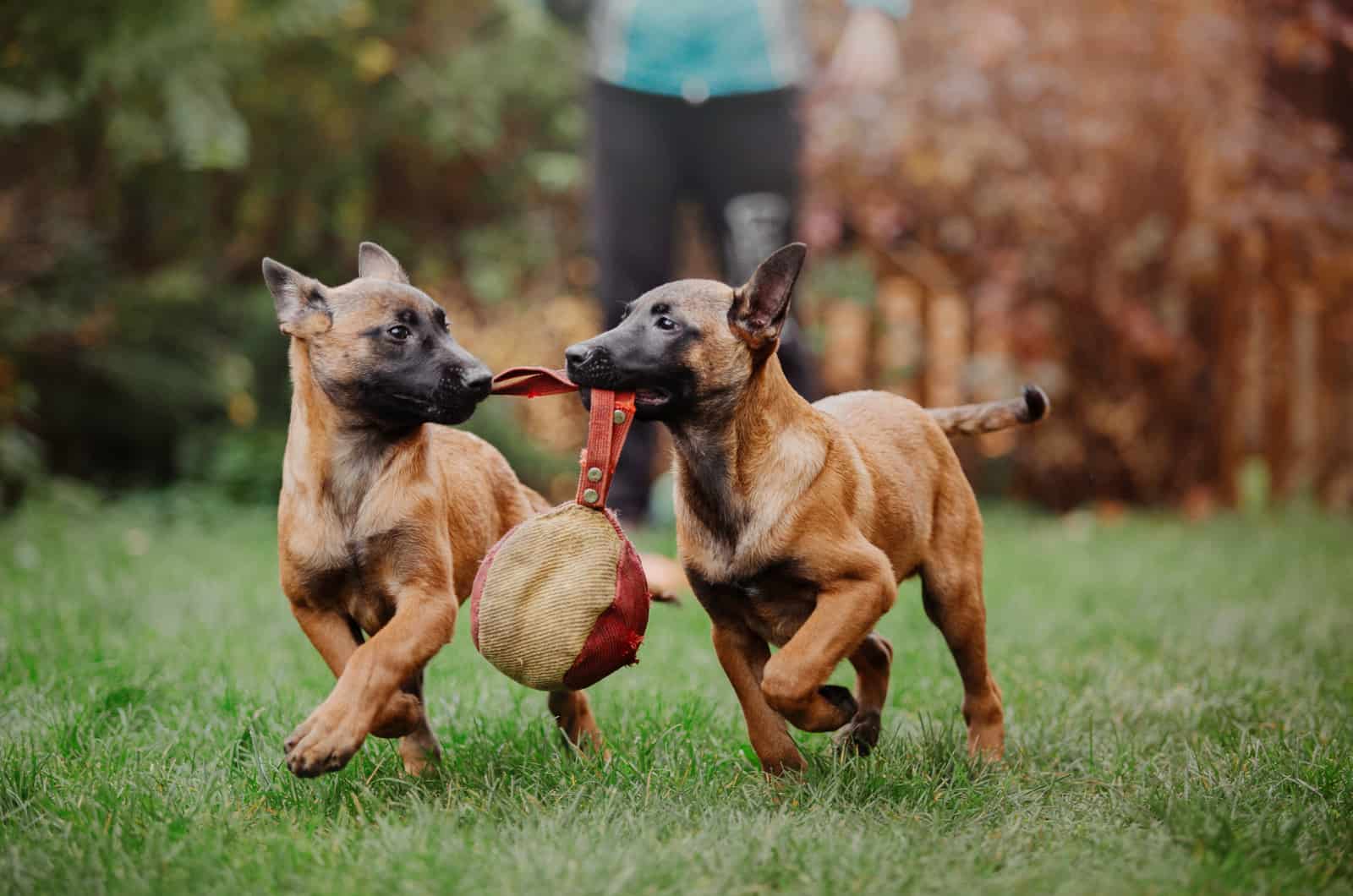
It’s clear that these are both wonderful breeds, with much in common and a few differences here and there. But which one is best in the Belgian Malinois Vs. Dutch Shepherd debate?
In truth, it’s too close to tell! And it seems unfair to promote one over the other because they both have such excellent qualities.
But that’s not much help to you when you’re trying to pick one.
So let’s try to look at it from a practical angle. You need to look at your own lifestyle, your experience with dogs, and your ability to commit to meeting the exercise needs of your new dog, whichever breed you choose.
Both breeds have energy levels that will suit active families who love outdoor pursuits and who can dedicate time to playing, hiking, walking, obedience classes, agility courses, tracking, dock jumping, and so on. Both make good family dogs, although the Dutch Shepherd has the edge when it comes to playfulness and affection.
The Mal’s high prey-drive counts against it, but don’t be fooled – the Dutch Shepherd will have its moments too! You’ll need a secure yard either way, and it’s essential to start socialization and dog training the minute you get your puppy home.
Both dogs have an independent streak, though the Dutch Shepherd is the more obvious. When this is coupled with their high intelligence, you have one very strong-willed dog on your hands. If you don’t tell them what to do from an early age, they will find their own way. An older dog that is set in its ways is much more difficult to train and handle than an 8-week old puppy.
You should be aware by now that both of these breeds are going to take some work and perhaps aren’t the best choice for first-time dog owners. They aren’t Labrador Retrievers! Yes, you’ll get love and affection, but they’re nowhere near as soft as the Lab. It all comes down to training, training, and more training.
You’ll also need to be on your toes at all times, as these quick-thinking dogs will be off in a flash, especially if your backyard or garden isn’t secure. That fence is going to have to be high enough to stop them, and you’ll need to check for any gaps.
So, are you ready to choose yet?
Perhaps you need a quick refresher of the main points:
Belgian Malinois
• Not a kennel dog, needs constant attention
• Can be stubborn at times
• Reserved and aloof with strangers
• Fairly affectionate
• Needs a firm, experienced hand
• Very smart and obedient, with the right training
• Extremely loyal
• Alert and watchful
• Moderate shedder
• Low grooming needs
• Lifespan 14 to 16 years
• High prey drive and herding instinct
Dutch Shepherd:
• Has an independent streak but needs to be around people
• Happy and friendly
• Obedient but needs early training
• Very affectionate towards family
• Wary of strangers
• Watchful and alert
• Extremely intelligent
• Moderate to high shedding
• Grooming needs depend on the length of the coat
• Lifespan 11 to 14 years
• Strong herding instinct and prey drive but not as high as the Mal
• Extremely loyal
Do you need more help? What about the choice of coat color? With the Mal, you’ll have much more choice, while the Dutch Shepherd is limited to brindle and yellow.
Well, that’s about all we can say about these two amazing breeds. It’s now up to you to decide which is best. The truth is that they are so similar that, in some ways, it doesn’t really matter. It’s going to come down to the finer details that only you can decide upon.
But whichever one you choose, you’ll have a brilliant dog that will bring you much love and enjoyment for many years.
Read Next:
• The Blue Dutch Shepherd Breed Standard Loophole
• Resolving The Dutch Shepherd Vs German Shepherd Confusion
